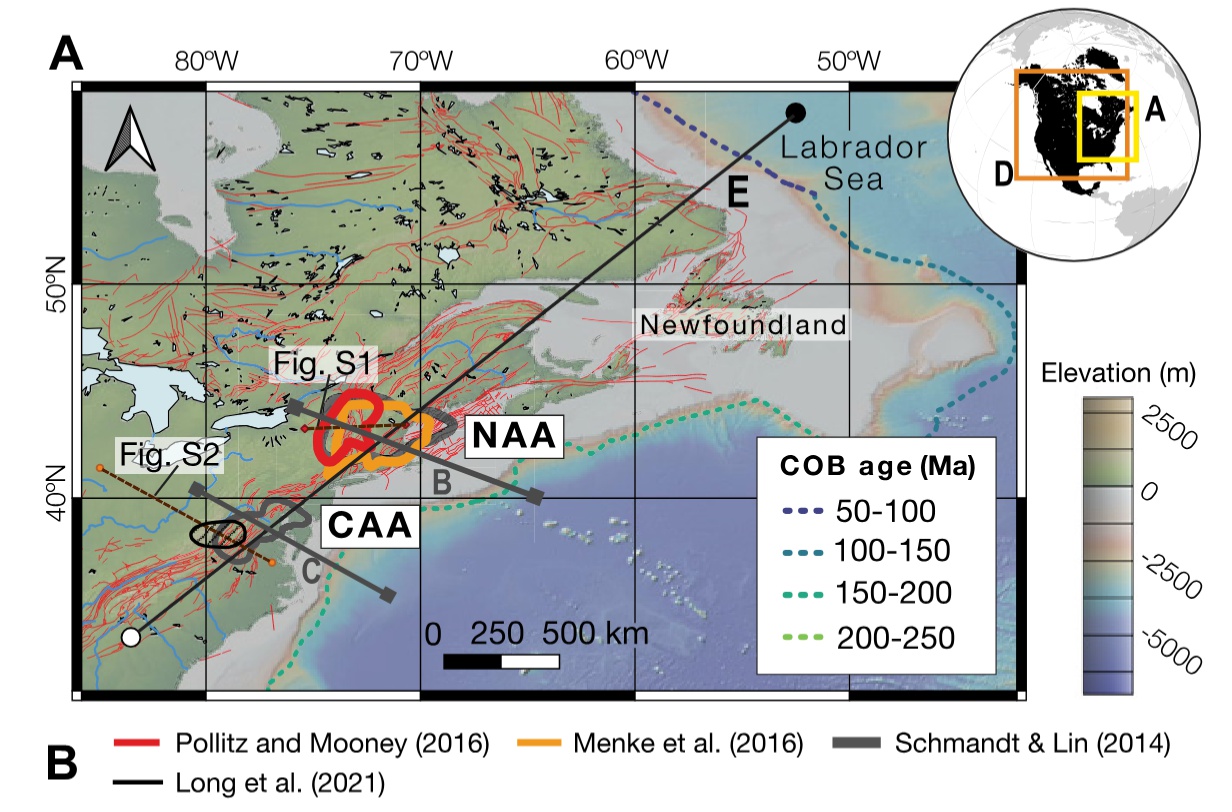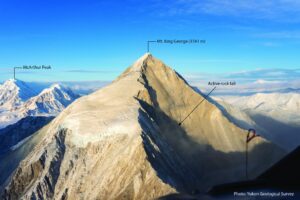It sounds like a bottom of the barrel B-movie sequel along the lines of Friday the 13th Part VIII: Jason Takes Manhattan, but an ancient force long-buried beneath the Northern Appalachians is heading for New York. Luckily for residents, it’s not a monster but a geological feature. Also, it’s moving only 20 kilometers every million years.
Maybe not slasher film material, but the so-called “Northern Appalachian Anomaly” was a geological mystery. The NAA is a region of very hot and unstable rock, 350-400 kilometers across and 200 kilometers beneath New England. It’s in a region that has been fairly quiet tectonically for at least 180 million years, leaving geologists unsure of how the NAA and its smaller cousin, the Central Appalachian Anomaly, formed.
Their best theory was that the NAA began as an aftershock from the split between Greenland and North America.
A recent study from the University of Southampton proposes an origin the researchers think fits better, and also helps explain how the ancient Appalachians are still standing.

This map shows the locations of the NAA and CAA. Photo: University of Southampton
Instabilities and rifts
The teams propose that the NAA, and possibly also the CAA, formed 80 million years ago under the Labrador Sea. When the Earth’s crust split, creating a tectonic rift between Greenland and Canada, it created a series of ‘Rayleigh-Taylor instabilities’.
This explains why the NAA is in such a geologically sedate region. It didn’t form there, but moved there, migrating 1,830km to 1,880km over the past 80 million years. It will reach the rock beneath New York in about another 15 million years.
Their explanation uses what they term the “mantle wave” theory. Here, the super-hot, dense rock underneath tectonic plates drips and bubbles, forming waves and peeling off in blobs. These waves ripple beneath the continental surface, explaining things like unusually high inland regions or isolated volcanic eruptions.
The NAA is one of these drips, which escaped during a tectonic rift and has been moving ever since. Currently, the team theorized, it’s helping to prop up the Appalachian Mountains.
As lead author Tom Gernon explained in a release, “Heat at the base of a continent can weaken and remove part of its dense root, making the continent lighter and more buoyant.”
Thus lightened, it has risen up, given the Appalachians a boost in recent (millions) of years.
The theory may also explain a similar anomaly in Greenland. The study proposes that this is a sibling of NAA, which broke off in the opposite direction. According to Gernon, this theory represents a larger revelation. Beneath a tranquil surface, he says, “the consequences of ancient rifting are still playing out.”






